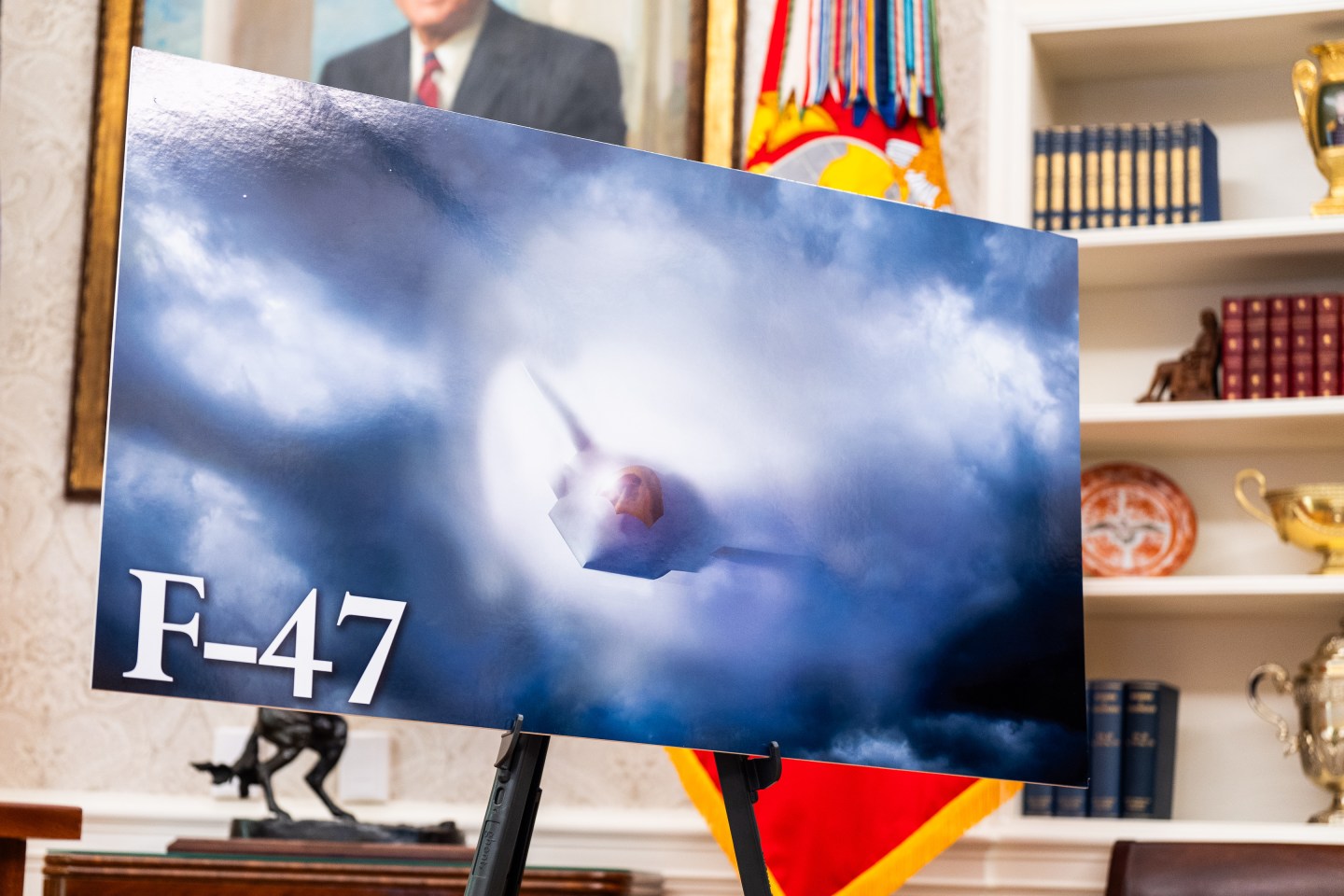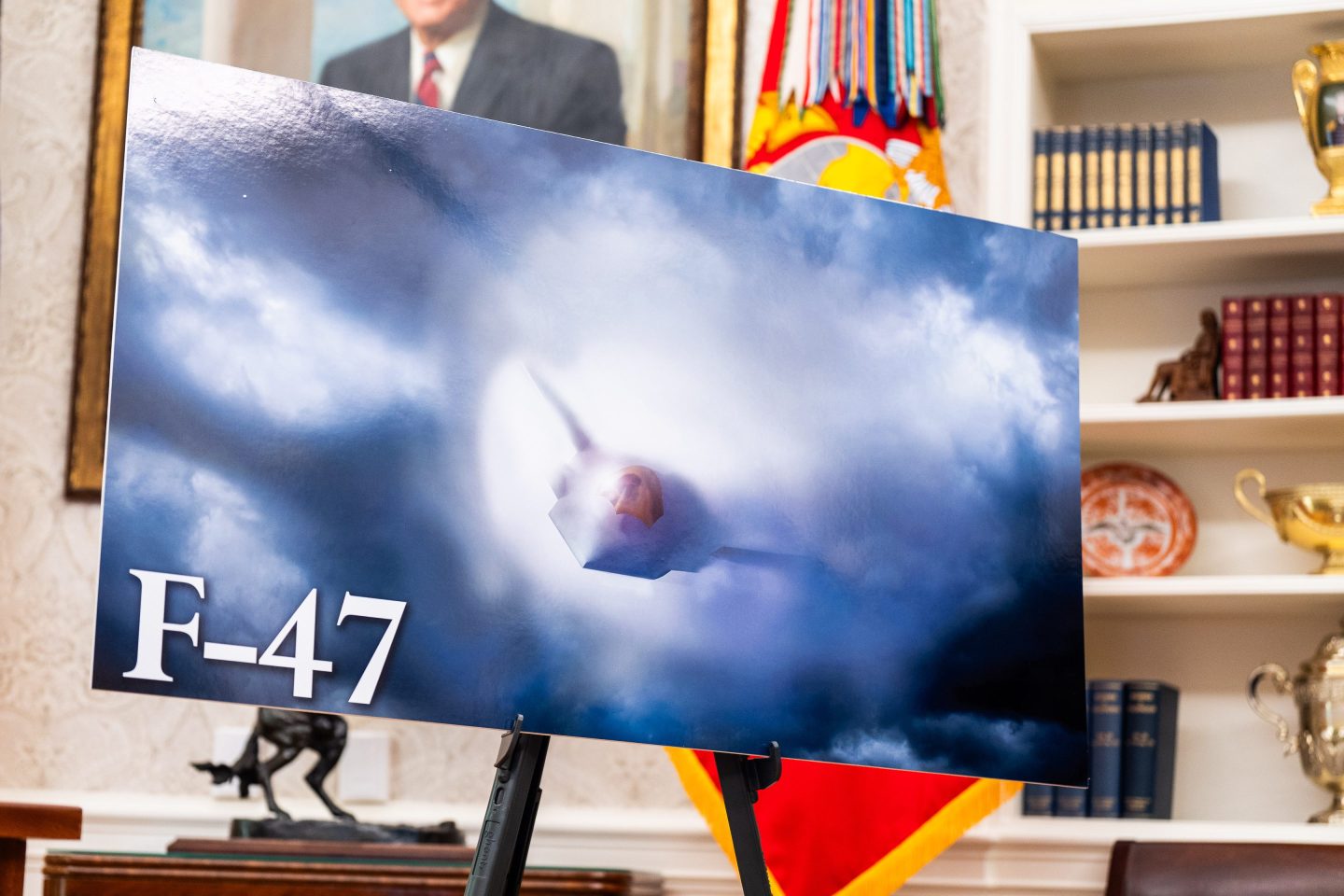Good morning. The critics always crow when a Fortune 500 company spends a lot of time and money on their branding, but you know what? There’s no limit on the cost of getting it wrong.
Consider the case of Dunzo, a Google-backed Indian online delivery company that launched in 2014, flew too close to the sun, pivoted hard, and…shut down in January.
Dunzo, alas, is donezo. You can’t make this stuff up, people. —Andrew Nusca
Want to send thoughts or suggestions to Data Sheet? Drop a line here.
U.S. government taps Boeing to make next-gen fighter jet

President Donald Trump said Friday that Boeing will build the Air Force’s next fighter jet as part of an initial contract worth some $20 billion.
The manned aircraft, called the Next Generation Air Dominance (or NGAD—of course there’s an acronym, this is the military we’re talking about), will have better stealth and penetration capabilities than anything in the U.S. military’s current fleet, according to the Pentagon.
That’s important for a potential conflict with China, it added. And unlike what you’ve seen in Top Gun, this jet will see deployment as part of a fleet of drone aircraft.
A burning question is whether the U.S. actually needs a next-gen fighter jet. (Stay with me, Mav.)
The Dept. of Defense has struggled mightily to produce its current flagship fighter, the F-35, which has been beset by delays and cost overruns. (It will cost taxpayers more than $1.7 trillion over its lifespan.)
And a planned stealth bomber, the B-21 Raider, is already in the pipeline, far enough along to conduct test flights.
Whatever the case, few details about the NGAD aircraft—which has also been referred to as the F-47—are available. Renderings from Boeing and Lockheed Martin revealed a flat aircraft with a sharp nose and no tail.
The Air Force has not shared how many it hopes to deploy, only that it seeks more of them than the F-22 Raptor, its direct predecessor. There are fewer than 200 of those in service today. —AN
Tesla has $1.4 billion that seems to have gone astray
A $1.4 billion discrepancy between Tesla’s capital expenditures and the valuation of the assets that cash was spent on, first reported by the Financial Times, raises questions about internal controls at Elon Musk’s electric vehicle giant.
You would expect the relevant numbers to add up for a domestic company with no big asset sales or impairments. Yet neither the company nor auditor PwC have provided clarification or responded to Fortune requests for comment.
Bullish Tesla investors envision a future featuring the company’s robotaxis and humanoid robot, Optimus. On the company’s latest earnings call, CFO Vaibhav Taneja said Tesla’s $11.3 billion in annual capex should remain flat this year. The company’s cumulative AI-related spend had just surpassed the $5 billion mark.
That spending shows up on the annual statement of cash flows as purchases of property, plant, and equipment, or PP&E. In the second half of last year, that amount grew by $6.3 billion, the same value for capex that Tesla reported in its slide deck for investors.
But the gross value of the company’s PP&E, or its worth before accounting for depreciation, only increased $4.9 billion in that span. One would expect those numbers to tally—and there is neither evidence any PP&E was sold nor Tesla recognition of any impairments to its “long-lived assets.”
Foreign currency changes can throw everything off, notes Tim Morrison, an accounting professor at Notre Dame and former audit partner at Ernst & Young. And Tesla could have gotten rid of assets that had reached the end of their useful lives, in which case it would make sense if they are no longer on the books.
Whatever the case, Tesla shares still trade at roughly 90 times the company’s projected earnings for the next 12 months, according to S&P Cap IQ estimates. To put it mildly, bulls better believe Musk’s investments will pay off in a big way. —Greg McKenna
Apple sued for alleged false advertising of AI features
Apple’s failure to launch its promised Apple Intelligence features this year isn’t just embarrassing—it’s a legal liability.
The company has now been whacked by a putative class action lawsuit in California, from iPhone 16 buyers who are (rightly!) miffed that they’re not getting what they signed up for.
“Apple’s advertisements saturated the internet, television, and other airwaves to cultivate a clear and reasonable consumer expectation that these transformative features would be available upon the iPhone’s release,” the suit read.
(To be precise, the ads promised some features on release last year and others, particularly the fully AI-fied Siri, this year.)
“Contrary to Defendant’s claims of advanced AI capabilities, the Products offered a significantly limited or entirely absent version of Apple Intelligence, misleading consumers about its actual utility and performance,” the suit continued.
The debacle last week led Apple CEO Tim Cook to oust John Giannandrea as the firm’s AI head, replacing him with Vision Pro visioner Mike Rockwell.
That may speed things up somewhat, but there’s still no word on when Apple will finally give Siri its promised smarts. —David Meyer
More data
—23andMe files for Chapter 11 bankruptcy. Cofounder Anne Wojcicki steps down as CEO.
—FuriosaAI rejected an $800m Meta takeover. The South Korean chip startup reportedly wanted to go its own way.
—Google rolls out Gemini Live video features. Answering questions about what’s on your screen or device camera in real time.
—Global music streaming revenues: $20.4bn in 2024. a record. Paid subscription revenues were up 9.5% to $15.15 billion.
—AI-based deepfake porn rises in popularity. Traffic to the 10 most popular apps jumped by more than 600% year over year.
—Bot Company worth $2 billion. AI-driven household robots from a post-Cruise Kyle Vogt.
—Yahoo sells TechCrunch to Regent. The publication joins a portfolio that includes PCWorld, DefenseNews, Cheddar, and…Club Monaco?
—X suspends opposition accounts in Turkey. Activism amid protests over the arrest of President Erdogan’s principal political rival.
—YouTube tests podcast ad feature. Host-read ads dynamically inserted and removed from video clips, as seen on Spotify and Apple Podcasts.
—Netflix digs in on video games. The latest strategy: Make an array of low-friction titles for its platform only.














